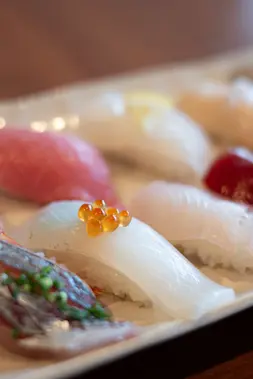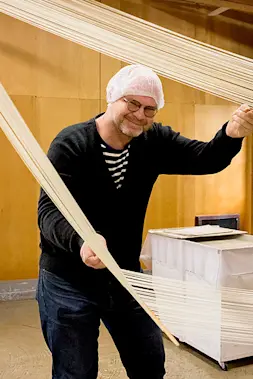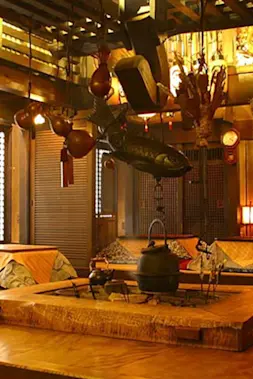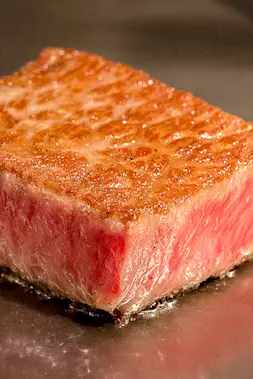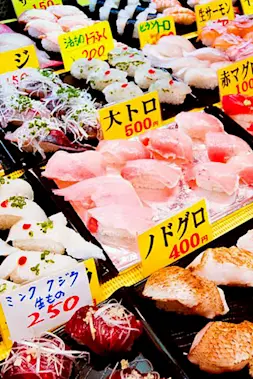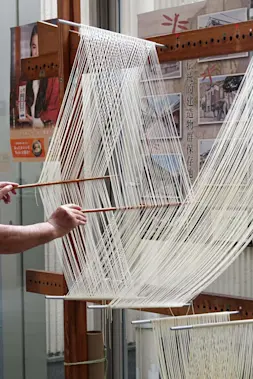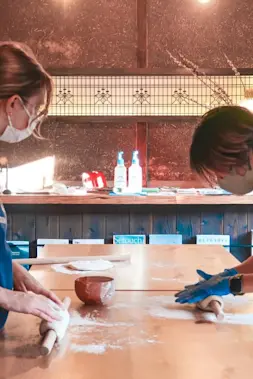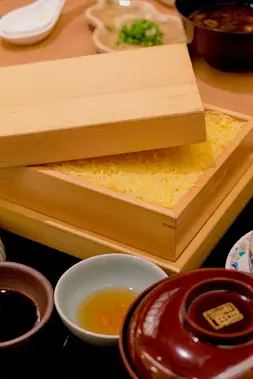Food & Drink
Pufferfish: Shimonoseki’s Artistic Culinary Highlight

-
- DESTINATION NAME
- Yamaguchi
-
- RELATED TAGS
-
- LAST UPDATED
- 29 March, 2021
Pufferfish — serve it as slivered slices of sashimi, deep-fried, boiled, grilled, or steamed — there’s a multitude of creative ways to enjoy one of Japan’s most celebrated delicacies, and the Shimonoseki City is where you can do it. Located on the most southerly tip of Japan’s main island, Shimonoseki is blessed with a bounty of sea life from three different oceans —the Seto Inland Sea, the Hibikinada Sea, and the Sea of Japan — suffice to say, there’s plenty of opportunities to sample the region’s seafood. However, their main claim to fame is pufferfish (also known as blowfish or fugu), a seasonal winter specialty of Shimonoseki, a city famously dubbed as the “Blowfish Capital of Japan.”
While the city’s Karato Market has a fantastic variety of seafood, a stop at one of Shimonoseki’s many fugu restaurants offers a curated pufferfish experience featuring the region’s famed fish. For this, I visited Heike Chaya, where I sampled an exquisite collection of fugu dishes prepared in more ways than I could have imagined, both a culinary feast for the eyes and mouth that can only be experienced in this area of Yamaguchi Prefecture.
Heike Chaya: Where to Eat Pufferfish in Japan
For over 46 years, Heike Chaya (平家茶屋) has been a family-run business ever since the restaurant was a small shop on the banks of the Kanmon Strait between Japan’s main island and Kyushu. This third-generation-owned business is a high-class restaurant serving all forms of pufferfish in artfully prepared dishes, offering a range of courses starting from around 1,600 yen for a simple fugu meal to over 10,000 yen for a deluxe set. In the summer, the restaurant highlights Shimonoseki’s other seasonal delicacy — fresh squid — with special courses centered around this seafood ingredient.
Though pufferfish has a bit of a lethal reputation for its highly toxic poison called tetrodotoxin, only certified chefs with years of rigorous training are allowed to prepare the fish. Heike Chaya’s own highly trained head chef demonstrates his culinary and preparatory skills, so you can leave the worry of poison far behind you as you enjoy your fugu course.
When I arrived, Hayashi-san, the leading operator of Heike Chaya, guided me through its elegantly-styled main room and into a private tatami-floored booth featuring views of the Kanmon Strait. Large shipping boats sounded their deep horns as they passed under the Kanmon Kai suspension bridge connecting Honshu and Kyushu, two of Japan’s main islands. Across the waters was Kyushu island, virtually a stone’s throw away, and I settled back into my seat as I took in the views. As two attendants brought in my fugu course for the lunch, my attention was brought back to the table.
Each fugu dish was served on different platter designs to enhance each pufferfish preparation, further complementing the fish arrangement itself. One of these artful centerpieces was a large plate of fugu sashimi— cut so thin they looked translucent — and delicately composed into the shape of a flower, like a work of art. As I admired the beautiful arrangement of my meal, Hayashi-san came in to introduce each dish.
“One of the things I love about pufferfish is how its texture transforms depending on how you serve it.” Says Hayashi-san, pointing to the various dishes. “When you eat it raw, it’s crunchy. Boil it, and you have something that melts off the bones. That’s the beauty of fugu.” Indeed, as I started to sample each of the various preparations, I was surprised at the drastically different textures that could be drawn from the same light-flavored pufferfish. Each dish was complemented with a side dish of ponzu dipping sauces, citruses, green onion slivers, spicy daikon, and peppers, each adding another burst of flavor to my meal.
Fugu Chiri: Japanese Fugu Hot Pot of Shimonoseki
Among the many dishes was fugu chiri, a Shimonoseki specialty of cooking pufferfish in a light broth. “Usually, these types of hot pots use red meat, so fugu-centric dishes like this one is particularly unique to this area. Since it’s low in fat and high in protein, there’s a healthy trade-off between using pufferfish over red meat, which is why some people prefer to eat it. Plus, blowfish is rich in collagen which is said to make your skin beautiful, and another reason why people love fugu,” relayed Hayashi-san.
Luckily for visitors like me at Heike Chaya, you won’t be left alone to figure out when the fugu has finished cooking in the hot pot. Restaurant staff cooked my fugu to perfection, so I didn’t have to worry about accidentally ruining this delicately flavored fish. If your stomach can handle a final delicious morsel, the deluxe meals end with zousui, a rice porridge using egg gently cooked in the leftover hotpot stock. I politely declined this end-of-meal dish — I don’t think I could have fit in another mouthful. As I let my lavish meal settle in my stomach, I gazed out into the ocean views, safe in the comfort of my private room. If you’re on a journey to sample Japan’s seasonal delicacies, Heike Chaya’s culinary fugu masterpieces paired with Shimonoseki’s ocean views will surely inspire your visit.
How to Get to Heike Chaya
From Kokura Station in Kitakyushu, take the local train to Shimonoseki Station, then transfer to the semi-express bus headed towards Omi Island (青海島), then get off at Mimosusogawa stop before taking a two-minute walk to Heike Chaya. The total trip takes approximately 40 minutes.
From Yamaguchi, catch a local train to Shin-Yamaguchi, then transfer to the JR Shinkansen to reach Shin-Shimonoseki. From there, walk to the Shin-Shimonoseki bus station and catch a 40-minute bus ride to Mimosusogawa. The total trip takes approximately 2 hours and 10 minutes.
Things to See and Do in Yamaguchi
If you’re looking to add another spectacular destination to your Yamaguchi travels, the red torii gates of Motonosumi Inari Shrine is one of “Japan’s most famous beautiful sights” and is only an hour away. Yamaguchi’s oldest onsen town, Nagato Yumoto Onsen, is another 15 minutes away and offers plenty of traditional ryokan inns to rest while soaking in their ancient hot springs. For more things to see in Yamaguchi Prefecture, read our separate article on the top places to see and do while you’re traveling in the area.
Photographs and text by Mika Senda
RELATED DESTINATION
Yamaguchi
Yamaguchi is surrounded by ocean, mountains and rivers and is characterized by its climate, which is comfortable throughout the year. Its natural scenery, which includes some 1,500 kilometers of coastline, is a cut above. The prefecture has Kintaikyo Bridge, one of the three most famous bridges in Japan, and other tourist attractions, and its fugu (pufferfish) is famous as a winter dish.



































